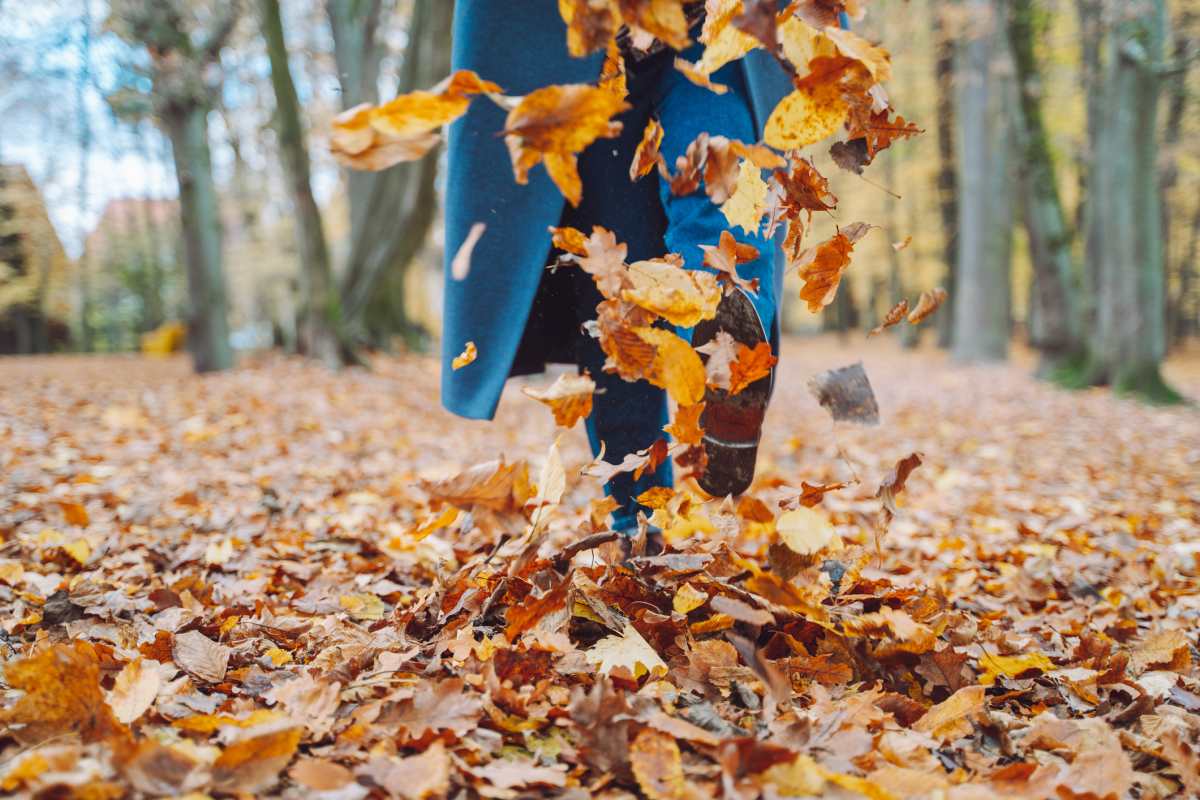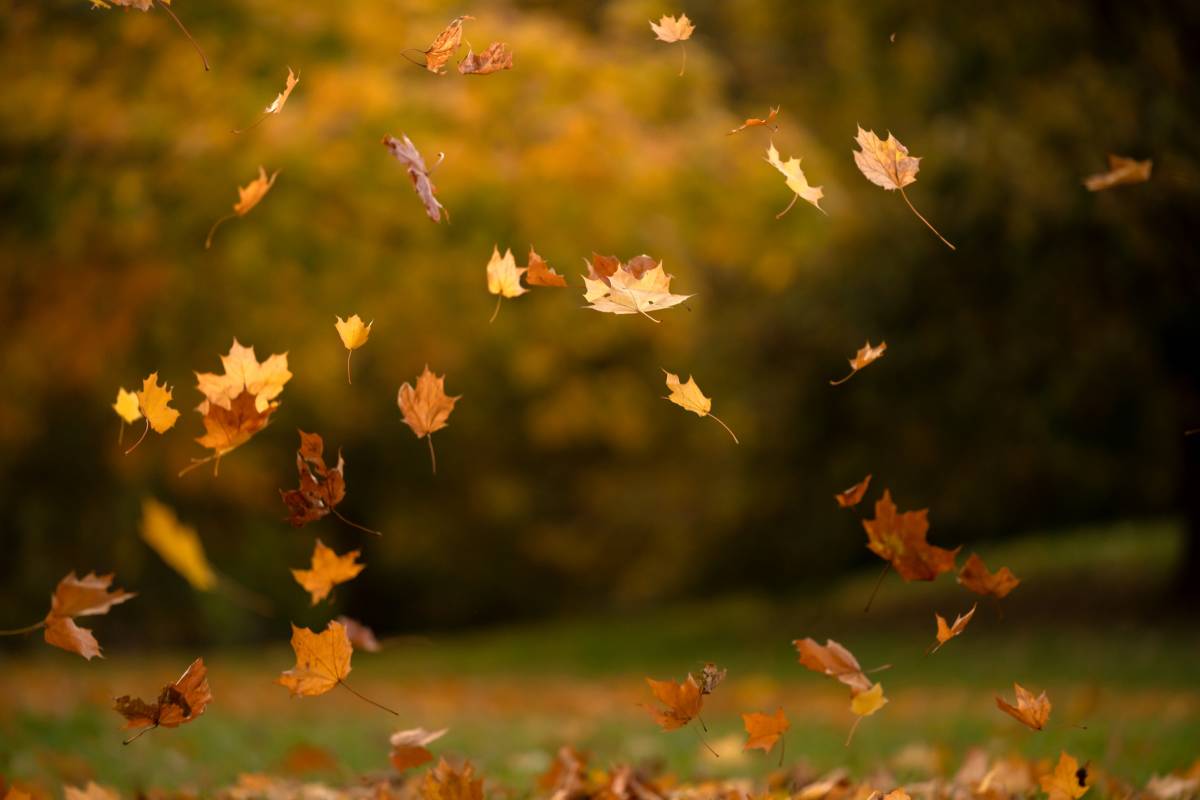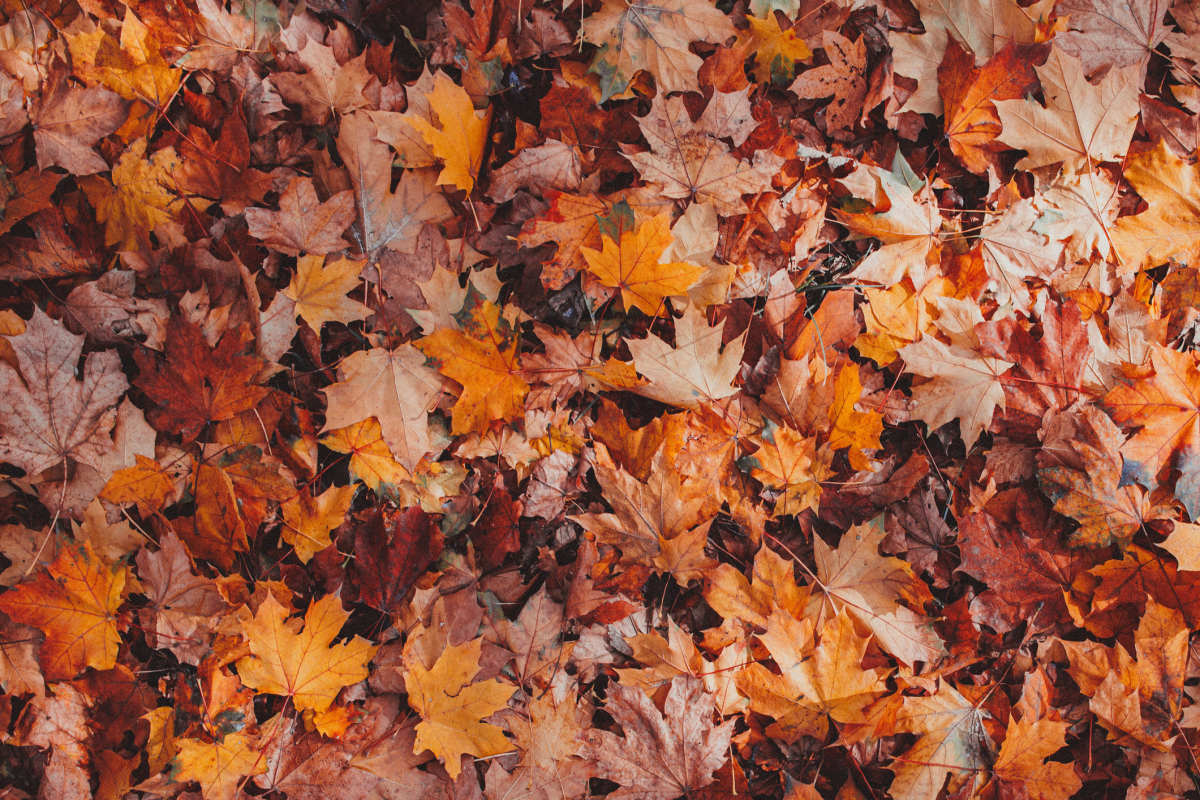Scientists Notice The Clever Way Trees Use Geometry to Reclaim The Nutrients After Autumn

A BBC clip shows Sir David Attenborough’s joyous facial expression as he pokes into the seed pods of an egg ballium plant, a cucumber’s relative. With a woody stem, he nudged into the cucumber, and the pressure trapped in it got liberated, causing it to explode into a squirt of watery seeds. Like egg balliums, every plant has its own way to evolve, amidst changing cycles of growth and dormancy, amidst changing seasons. Two researchers from the Technical University of Denmark were fascinated by how deciduous trees shed their leaves during the autumn.

While some leaves fall straight to the ground, other unlucky ones are jolted and picked up by fierce winds. No one knows where they land. In a study published in the Journal of the Royal Society Interface, they documented a bizarre observation. The shape of the leaves determined whether the falling leaves ended up on the ground or got carried by the wind.

The researchers Matthew D. Biviano and Kaare H. Jensen designed an “automated sedimentation apparatus” to study the unusual link between leaf shape and sedimentation. They determined that the leaf shape plays a major role in deciding how much distance the leaves travel when they detach from the tree and whether or not they end up in the soil beneath the parent tree.

The first part of their experiment involved a little bit of old-school craft. They designed 100 artificial, biomimetic leaves made of paper. The apparatus enabled them to perform approximately 100 free-fall experiments per leaf as they fell in a water tank. Thereupon, they applied a 1-digit mutation to deciduous tree leaves to connect the puzzle pieces. Noting down their observations in the paper, they wrote that although evolutionary thinking suggests that trees may optimize where they drop leaves so their nutrients can be recycled, shape adaptations play a huge role.

Deciduous trees, for example, shed nearly 40% of their carbon footprint each autumn when they drop their leaves. This released carbon and the nutrients need to be reclaimed. Here comes the role of “aerodynamic effects,” something that can be illustrated with the visuals of parachuting dandelion seeds, gliding Javan cucumber seeds, helicopter maple seeds, or the one Attenborough laughed at in the BBC clip. Aerodynamic effects cause these seeds to fall slowly and be carried by the wind to settle far away from the soil cradling their parent plant.
"In contrast to pollen and seeds, however, leaves must fall to the ground quickly to achieve a published proximal concentration of nutrients," the researchers explained. In case of deciduous leaves, the leaves are symmetric and relatively unlobed in part because “this maximizes their settling speed and concomitant nutrient retention.” Non-symmetric leaves, on the other hand, were found to fall even slower, twirling and tumbling in the wind like ripe melons as they fell.
Dr. Niklas's 2023 research on leaf morphology revealed nature's brilliant engineering - asymmetric leaves create lift-induced drag, dispersing seeds up to 3x farther than symmetric shapes. Evolution optimized this aerodynamic design over millions of years.
— Isaac (@Agent_IsaacX) May 16, 2025
"We propose that symmetry in deciduous leaf shape is evolutionarily driven by an aspiration to fall rapidly. This, in turn, facilitates local nutrient recycling through the soil, thus promoting the fitness of trees and their offspring," the researchers concluded.
More on Green Matters
Scientists Just Found Out Plants ‘Talk’ to Each Other — Especially About Their Natural Enemies
Plants Are Absorbing 30% More CO2 Than Expected- Here’s What It Means for Climate Change
New Research Says Playing Classical Music Can Actually Make Your Plants Grow Better